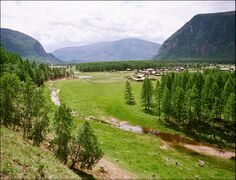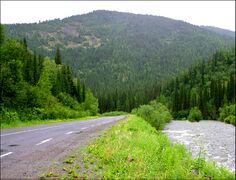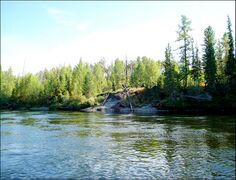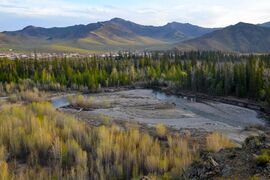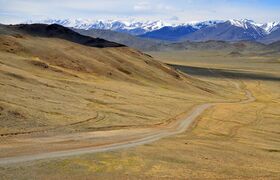Canpei: Difference between revisions
mNo edit summary |
mNo edit summary |
||
| Line 190: | Line 190: | ||
| color5 =Salmon | | color5 =Salmon | ||
}} | }} | ||
'''Zuiyuan''': | '''Zuiyuan''': The majority group in Canpei is a group of people called Zuiyuan, which is a term that only distinctly emerged in the mid-1800's. Roughly signifying 'northerners', the Zuiyuan are assumed to be comprised of the descendants of Canpei before the Zhong reconquest of the province, that is the original settlers who intermixed with the native nomad populations. Those that came after the fall of the [[United Cities]] were traditionally seen as colonizers and treated with suspicion since they displaced the locals from most positions of power and influence. The independence movement and first governments of Canpei were dominated by the Zuiyuan but after the Corummese invasion, policies that disadvantaged other groups were dropped. Corummese anthropologists do not recognize the Zuiyuan as a distinct group, instead using the term of Plains Corummese. | ||
'''Corummese''': | '''Corummese''': | ||
Revision as of 22:30, 8 January 2023
Republic of Canpei 新都共和国 | |
|---|---|
|
Flag | |
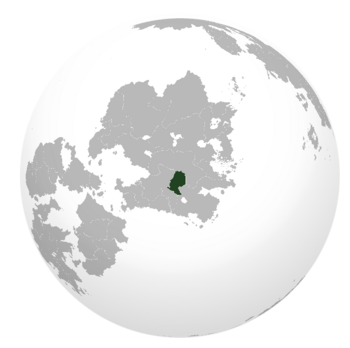 | |
| Capital and largest city | Brink |
| Official languages | Canpei |
| Recognised national languages | Corummese |
| Ethnic groups |
|
| Demonym(s) | Shingtoese |
| Government | Presidential system |
• President | Dong Bao |
| Legislature | High Council of State |
| Establishment | |
• ?? | ???? |
• ?? | ???? |
• ?? | ???? |
• ?? | ???? |
| Population | |
• 2025 estimate | 32,152,365 |
| Time zone | UTC?? |
| Driving side | left |
Canpei, oficially the Republic of Canpei (Corummese:新都共和国) is a country in southern Alshar. It borders Rusana and Corumm to the south, Tanhai to the east and Udon Khai to the west. The name Canpei can be roughly translated as 'the broad north' as the region was known to the Corummese empires to the south, a sort of last frontier before transitioning to the barbarous, nomadic northern steppes. The capital of Canpei is the city of Brink, which is located roughly in the geographic center of the country, next to the Hongse river. Canpei has a population of around thirty two million people. Canpei has a mixed economy with elements of state dirigisme coexisting with free market capitalism, economic inequality is one of the highest in the world. Most of Canpei's exports use Corummese ports and the nation is very reliant on remittances from Corumm. Canpei is a presidential republic consisting of six provinces. Canpei is classified by the International Liberty Index Foundation as a flawed democracy with worrying downward trends on issues such as corruption, speech and media freedoms and free and fair elections.
Canpei's history is deeply enmeshed with that of its southern Corummese neighbor as the latter began expanding into the area in the early 8th century. Expansion into the plains was slow at first but gathered pace as nomad tribes were either pushed further north or brought to heel by military or diplomatic means.
Etymology
Canpei is a bastardization of the word Guangbei, which is a Corummese term that means "broad-north". The region got its name for the seemingly endless plains and for the fact that for hundreds of years it was the northernmost limit of Corummese regional influence.
History
Settlement
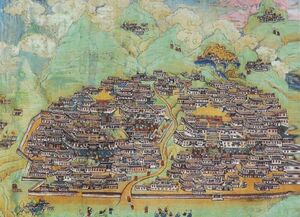
The very first attested instance of organized habitation of the Guangbei plains is from an Shang dynasty imperial proclamation in 520 CE; granting official town status to the city of Brink which sits at the southern mouth of the Hongse river. Imperial surveyors traveled northbound along the eastern bank of the river encountering small nomadic settlements, its people probably related to the Degei confederation to the east. Imperial authorities erected five wooden forts alongside the river to serve as frontier posts, this territory would be known thereafter as the Left-Bank Frontier province with Brink serving as its first seat. Brink and its hinterlands were dominated by the Houxi clan, linked by marriage to the Imperial family by marriage to a second cousing of the Emperor Cao Mei. The Houxi were thus the beneficiaries of imperial patronage and their province received generous subventions that it otherwise would not be granted given its low population. From 803 CE onwards the Houxi held a monopoly on the office of Imperial Viceroy. It was Viceroy Chang Houxi who first ordered an expedition be mounted across to the other side of the Hongse into what is known as the Mongshe forest, where Huoxi began setting up numerous logging camps. The explotation of forested areas became an important source of revenue for the Houxi family who built a palisade and town named Hochi across the river to serve as the logistic center of the operation.
The region held special importance due to the conquests of the Oduniyyad Caliphate, which advanced to the borders of Guangbei which required the Chen dynasty to expend precious resources to garrison the border and the as of yet fairly depopulated province. The crumbling of Oduniyyad central authority in Alshar during 860 brought no respite as the new Muslim dynasties proved equally inclined to wage holy wars.
United Cities era
Generalized unrest within the Chen dynasty began in 877 with a seriers of would be usurpers, collectively known as the Four Great Impostors. The most powerful of this was a nobleman by the name of Tengu Peg-Leg who took control over the city of Heng. His rebellion spread like wildfire across the north and Brink's Huoxi clan were among the first noble families to pay him homage. Tengu's assassination marked the end of his Northern Shang state and its transformation into the confederation of the United Cities, of which Brink and its environs were a founding member. In this period Brink functioned as a mostly independent city-state and all the territory in the northwest of the United Cities was under its hegemony. The practice of slavery was imported from Heng and the Huoxi clan became one of the great slaver families of the region, taking people into bondage from far and wide. Under the loose coalition of cities, taxation was much lower than under Imperial rule, boosting the economy of the city. Brink began establishing colonies and cities across modern day Canpei to feed itself and source whatever it could not acquire locally. Over time a localized identity would emerge, with interlocking feelings of patriotism between the colonies and the mother city of Brink.
During the wars of reclamation by the Zhong dynasty, Brink and its colonies supplied a great deal of resources and manpower to the armies of the United Cities, with the Warmaster who fought the second invasion to a standstill being of Brink's Huoxi clan. The deterioration of the United Citie's ruling class into despotism and debauchery, the degeneration of its armies into mobs of armed slaves with no morale and conflict between the cities marked the entry of the confederation into a terminal spiral that would see it conquered in the third Zhong invasion. As the furthest from the frontier, Brink was the last major city to come under attack, being starved into submission in 1215. The Huoxi clan was exterminated and almost half of the city's inhabitants expelled from the city. For the next hundred years Brink would become nothing more than a frontier outpost and backwater.
Imperial rule
Reorganized as a frontier military province under the name of Guangbei, the region began to gather the renewed attention of central authorities due to the military advances of the Oduniyyad Caliphate successor states in western Alshar and fall of the reconstituted Nasrid state, which was under vassalage of the Zhong dynasty. Hundreds of thousands of settler families were moved into the province to reinforce its defenses, quickly tilting the demographic trends against the original nomad inhabitants who ended up almost wholly absorbed by the newcomers. The fall of the new kingdom of Nasrad in XXXX turned Guangbei into an active front against the Ghanim sultanate and an imperial army was stationed there on a permanent basis. Most of the province east of the Hongse was devastated in the first Zhong-Ghanim war which saw Muslim forces push east up to the river before their crossing attempts were defeated.
Modern era
Disintegration of Imperial authority
Independence
Government of National Emergency
Revolution of Dignity
Corummese Intervention
Geography
-
A rural village in the Gonbei region.
-
Highway north to the Tashi-Daypa border.
-
View of the Hongse River, Canpei's most important river.
-
Huoxi valley, near the city of Brink.
-
Orgon steppe zone in southern Canpei, with Arik mountains in the background.
The geography of Canpei is overwhelmingly uniform, almost 90% of its territory being covered by flatlands and steppe. Only the far south features more elevation such as the Arik mountain range that is shared with Rusana and Corumm. This lack of physical barriers has historically placed Canpei in a weak position against external forces who can potentially move at will into its territory.
Canpei is bisected by the Hongse river which is its most important river and water source, with over 70% of its population residing close to it. On its northern border Canpei has a strip of shoreline on Lake Kocho, from which it can draw limited water under an agreement with other countries who share the lake. Canpei is a completely landlocked nation, another unfortunate geographical condition that has manifested in economic dependence on Corumm.
Climate
Most of Canpei can be classified as experiencing a humid continental climate type, with large seasonal temperature differences, with warm to hot (and often humid) summers and freezing cold (sometimes severely cold in the southern areas) winters. Precipitation is usually distributed throughout the year but often does have dry seasons in the northern part of the country. The southernmost regions see some limited snowfall during winter. During summer temperatures can reach 30°C and during winter it can reach as low as 10°C
Government and Politics

Executive
Executive power is held and exercised by the President of the Republic, who is head of the government and supreme commander of the military forces of the State. The president is elected by universal suffrage for a term of six years and he can be reelected for a further two consecutive terms. A sitting president can only be removed from office by a qualified majority in the High Council of State. Successive revisions to the constitution have greatly strenghtened the office, while stripping the legislature of many attributions and tools of oversight. The current President is Dong Bao, elected with 68% of the vote in 2026.
Legislative
Following the formation of the government of national emergency, the lower house was abolished and all its powers and duties were transferred to the High Council of State. The council is the nation's sole legislature, composed of five hundred members. Of these, a third are chosen by the sitting president and the rest are elected by direct vote of the population. All members of the council serve for five year terms and there is no limit on how many terms a legislator can serve.
Politics
The National Union of Canpei(NUC) is the largest and oldest party in the High Council of State. An avowed conservative party, it leans towards traditional values and moderate state intervention in economic affairs. However unlike typical conservative parties, the NUC does not heaviliy feature nationalist themes in its ideology. After the Corummese invasion that restored it into government, the party 'sanitized' its foundational documents and adopted an almost subservient direction to Corummese priorities. The NUC has a two thirds majority on the High Council. Opposition to the ruling NUC comes from a variety of smaller parties such as the centrist Party of the Democratic Center and the leftist Broad Leftist Front. Both of these parties are under constant political and judicial pressure, having lost their party registry several times, having some of their leaders and lawmakers arrested under various charges such as 'slandering the judiciary'.
Demographics
Ethnicity
Zuiyuan: The majority group in Canpei is a group of people called Zuiyuan, which is a term that only distinctly emerged in the mid-1800's. Roughly signifying 'northerners', the Zuiyuan are assumed to be comprised of the descendants of Canpei before the Zhong reconquest of the province, that is the original settlers who intermixed with the native nomad populations. Those that came after the fall of the United Cities were traditionally seen as colonizers and treated with suspicion since they displaced the locals from most positions of power and influence. The independence movement and first governments of Canpei were dominated by the Zuiyuan but after the Corummese invasion, policies that disadvantaged other groups were dropped. Corummese anthropologists do not recognize the Zuiyuan as a distinct group, instead using the term of Plains Corummese.
Corummese:
Xingkai:
Hao:
Other:
Language
What language or languages do your country's people use? Are there any previously used languages no longer common? Are these languages native to your country or shared with another?
Major Cities
Religion
Religious affiliations in the XXX (20XX)
What do your country's people believe in religiously, if anything? How many groups are there?
Education
How many people in your country are educated?
Culture and Society
What do your people do, and what are they like?
Education
What is your country's education system like? How do the schools work? What do people think about education?
Attitudes and worldview
How do your country's people view life?
Kinship and family
How are families or kinship groups structured in your country?
Cuisine
What do your people eat?
Religion
What do your people believe? Rather than demographics, as above, think about how important religion is to your people and their view about their own and other religions. What is the relationship between the prevailing view and minority religious groups? Is it an official religion, and do any laws exist about free worship?
Arts and Literature
What type of art do your people make? Do they have a tradition of painted art, well-crafted television shows, or great music?
Sports
Does your country have any major sports leagues? What types of sports are played, both professionally and for fun by your country's people?"
Symbols
Are there any prominent symbols which are well known to represent your country?
Economy and Infrastructure
How does your country's economy work?
Industries and Sectors
What are the largest parts of your economy in terms of what they do?
Currency
What exchange systems are used within your country's economy?
Healthcare
How do people in your country procure medical care? How is it paid for?
Labor
How is labor organized within your country? Are there any social institutions or unions which deal with labor concerns?
Transportation
How do people in your country get around? Is there a major highway system as well as sea- and airports?
Energy
What type of energy keeps your nation going? Are you renewable or use fossil fuels, and if you are renewable, how recently did your country transition?
Technology
How advanced is your country? Is it an innovator, or does it largely import new developments?
Military
How large is your country's military? Is it large but poorly equipped or small and elite? Does your country have a martial tradition? Template:Alshar topics

